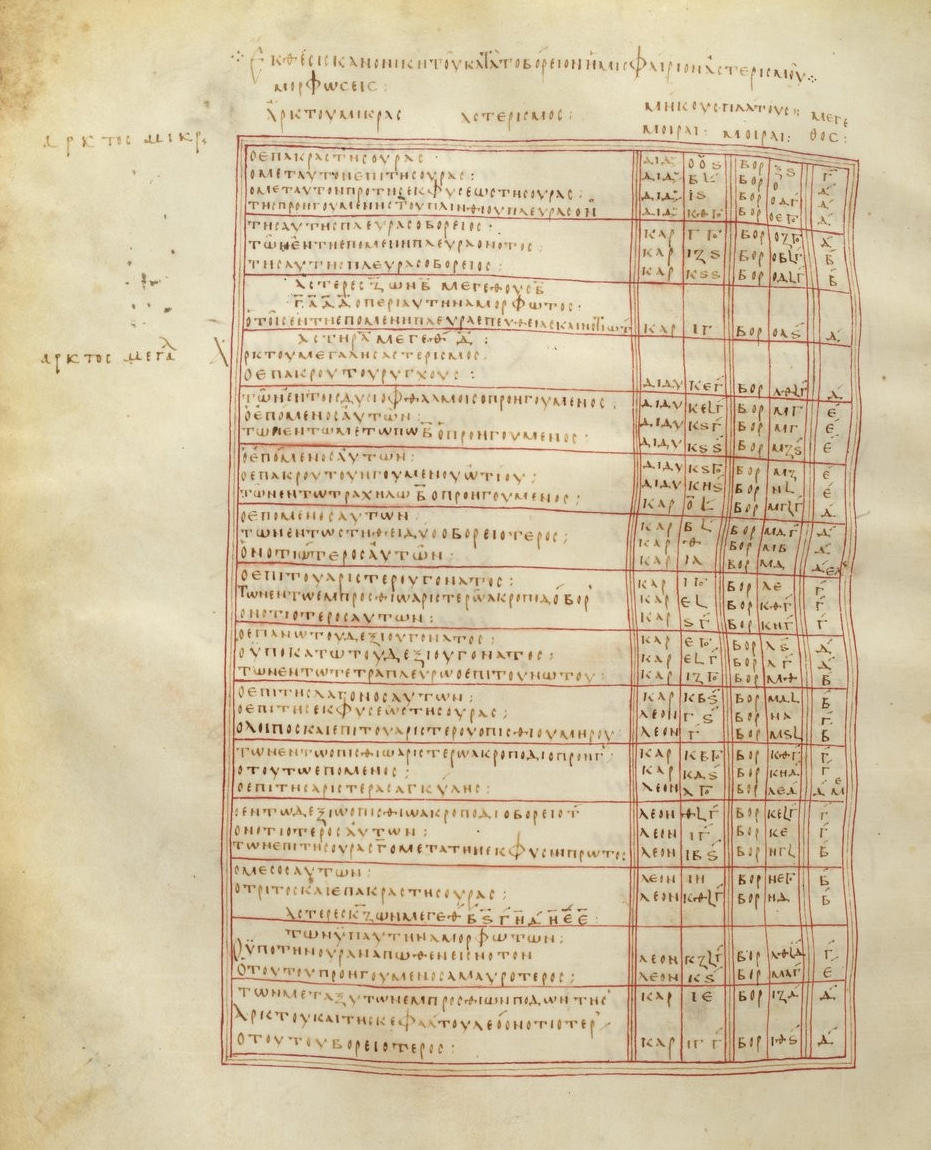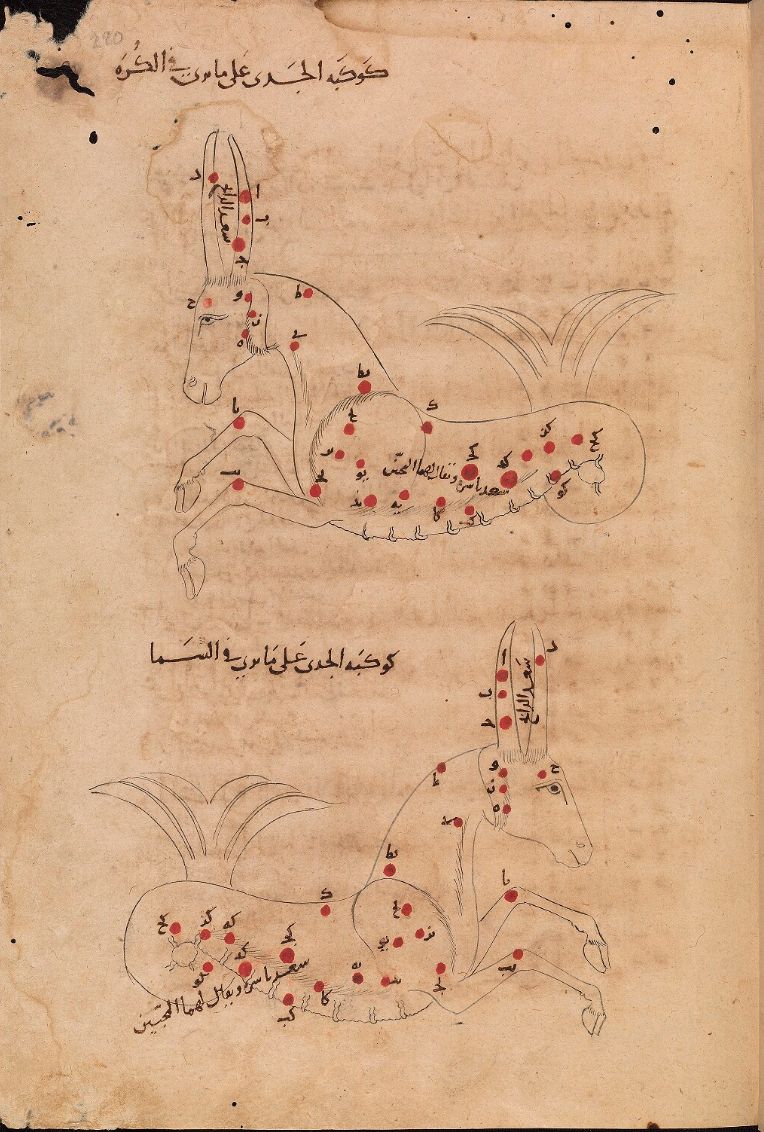
A page of the star catalog from the Paris 2389 Almagest manuscript (7th - 9th century)
The Challenge
Participants are challenged to combine the descriptions from Ptolemy's star catalog with the stellar coordinates to produce an imagining of each of the 12 zodiac constellations that accurately represents the cosmos as described by Ptolemy.
The project officially begins March 20, 2023 with the first constellation (Aries) and will follow zodiacal the signs throughout the year until the zodiac is complete, repeating the cycle annually.
